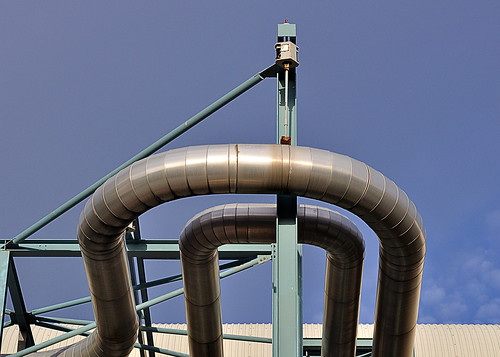Dust is unfortunately one of the most underestimated hazards in industrial organisations. If your company hasn’t implemented effective dust extraction systems you are potentially putting yourself, your whole staff and surroundings at high risk.
A particular example where dust has been a major hazard is the disaster of the Jahn Foundry Corp in Massachusetts. Over time, excessive dust formed from resin used to make the molds deposited in the plant’s internal odour control system. The dust ignited, causing two enormous explosions and proving fatal for three staff members while injuring nine others. The experts who examined the scene stated that the amount of dust needed to cause the explosion was “relatively small” as it built up gradually.
In the UK, the Health & Safety Executive (HSE) states that, “Generally, all powders except inorganic minerals should be assumed to be explosive, unless testing shows this not to be the case.” To avoid the bill for long-term statutory sick pay, lower productivity and tighter profit margins, incorporate an on-going and trusted mechanism within your industrial structure.
Ideally the provider you choose should have many years’ experience providing scalable industrial, engineering and environmentally friendly solutions. The installation of industrial dust extractors and dust extraction systems in your workplace will provide a safe and acceptable environment for you and your staff. It is estimated that at least 1,250 companies in the UK haven’t incorporated these vital safety measures, putting themselves and their whole staff at risk.
Not only are fires and explosions a dangerous result of dust build-up, there are also other health hazards involved including the effects of constant inhalation. Workers still suffer from numerous illnesses through frequent exposure to dust which is inhaled within work environments, the worst being variations of lung diseases coming under the term ‘’pneumoconiosis’’, which means in simple terms; dusty lung.
To avoid any respiratory effects and all other implications of improper or non-existent dust control, hazardous materials should be replaced with non-hazardous materials where possible. If this is not viable, there are other control systems which can be i ntroduced:
ntroduced:
• Wet processes as opposed to dry
• Dust-producing processes enclosed while under negative air pressure
• Exhaustion of dust in the air via a collection system such as HVAC air conditioning prior to emission to the internal and external atmospheres
• Use of vacuum systems
• Trusted controlled disposal methods of dangerous and toxic waste
By Sam Hurley Junior Digital Marketing Consultant at FDC studio
Learn more about Aerotherm and industrial ovens

